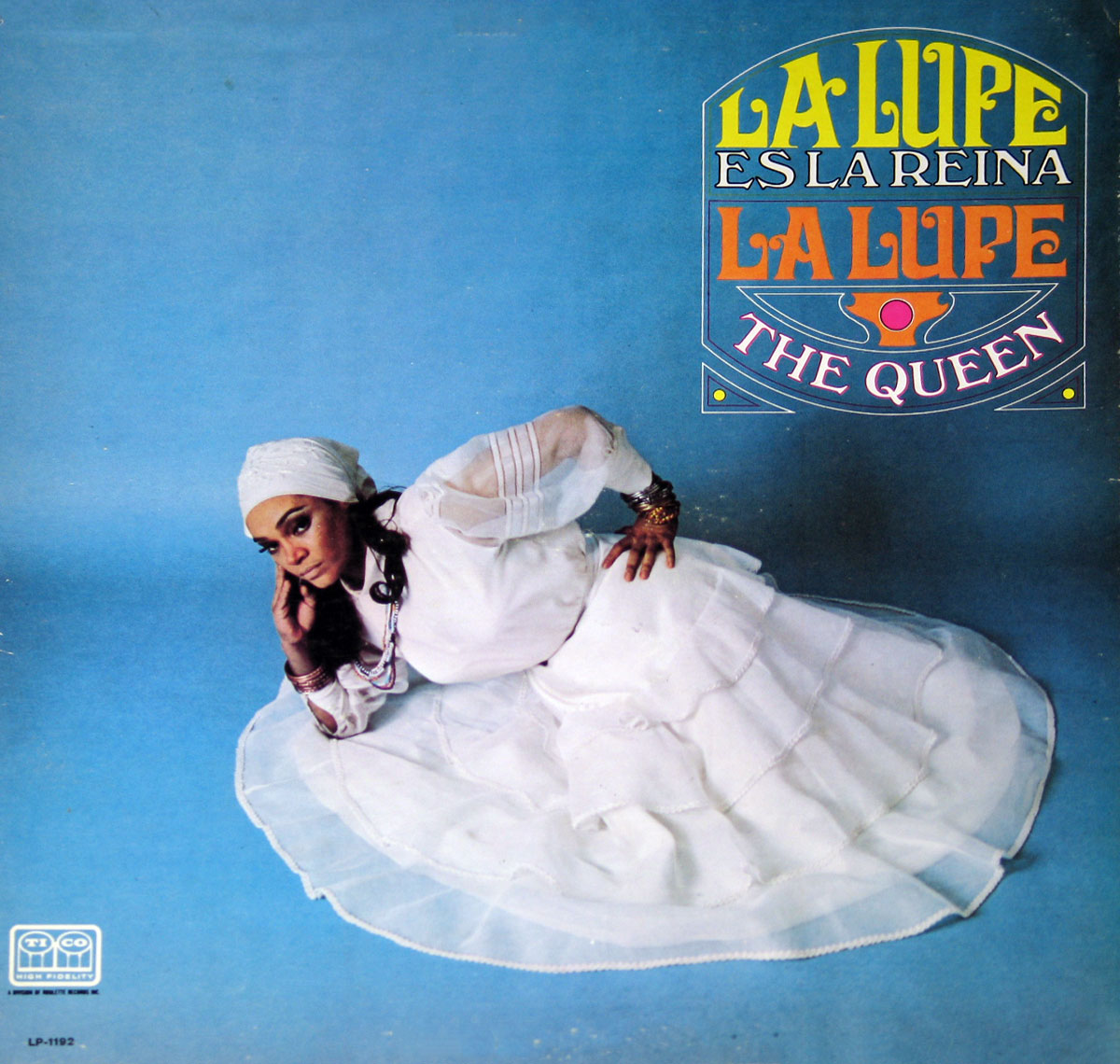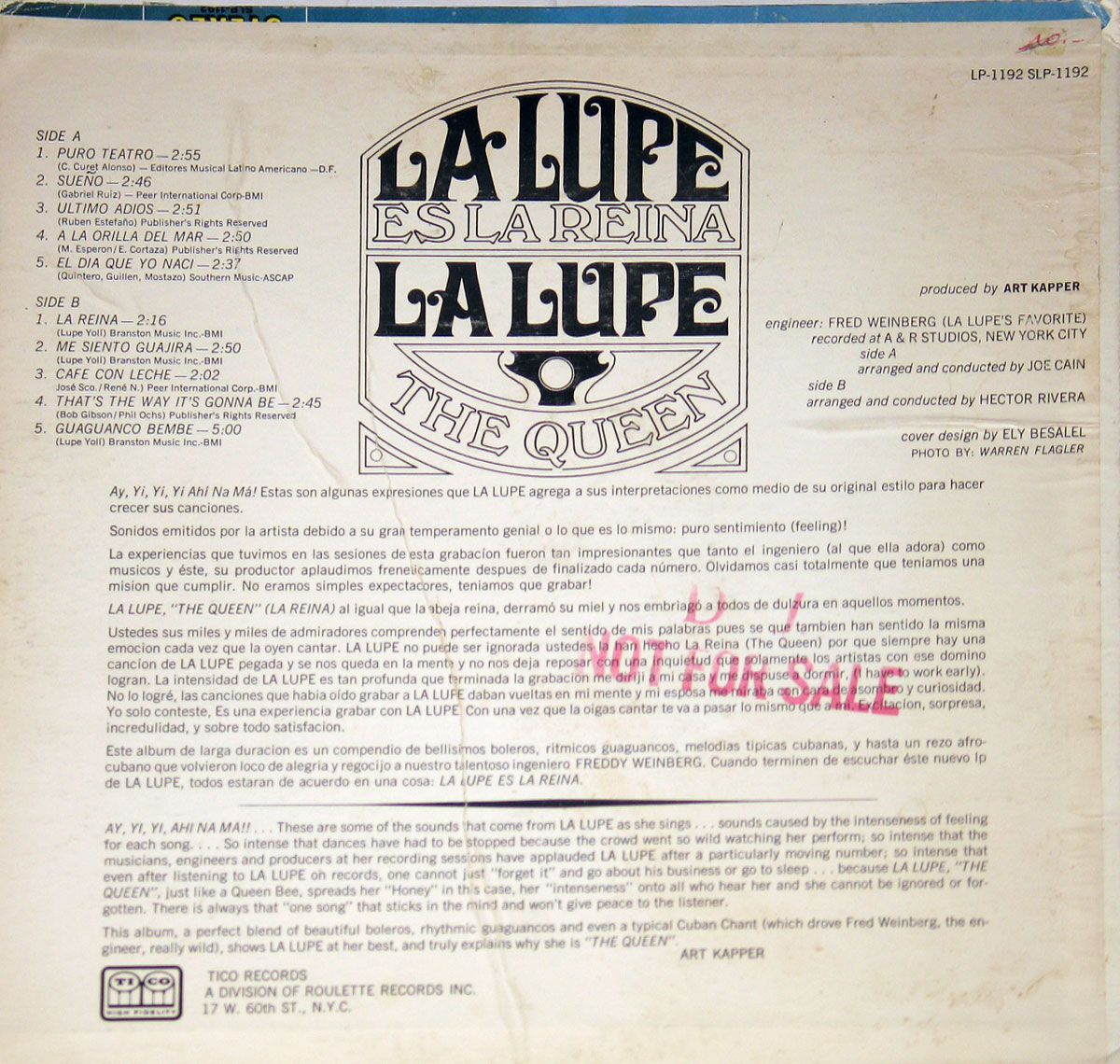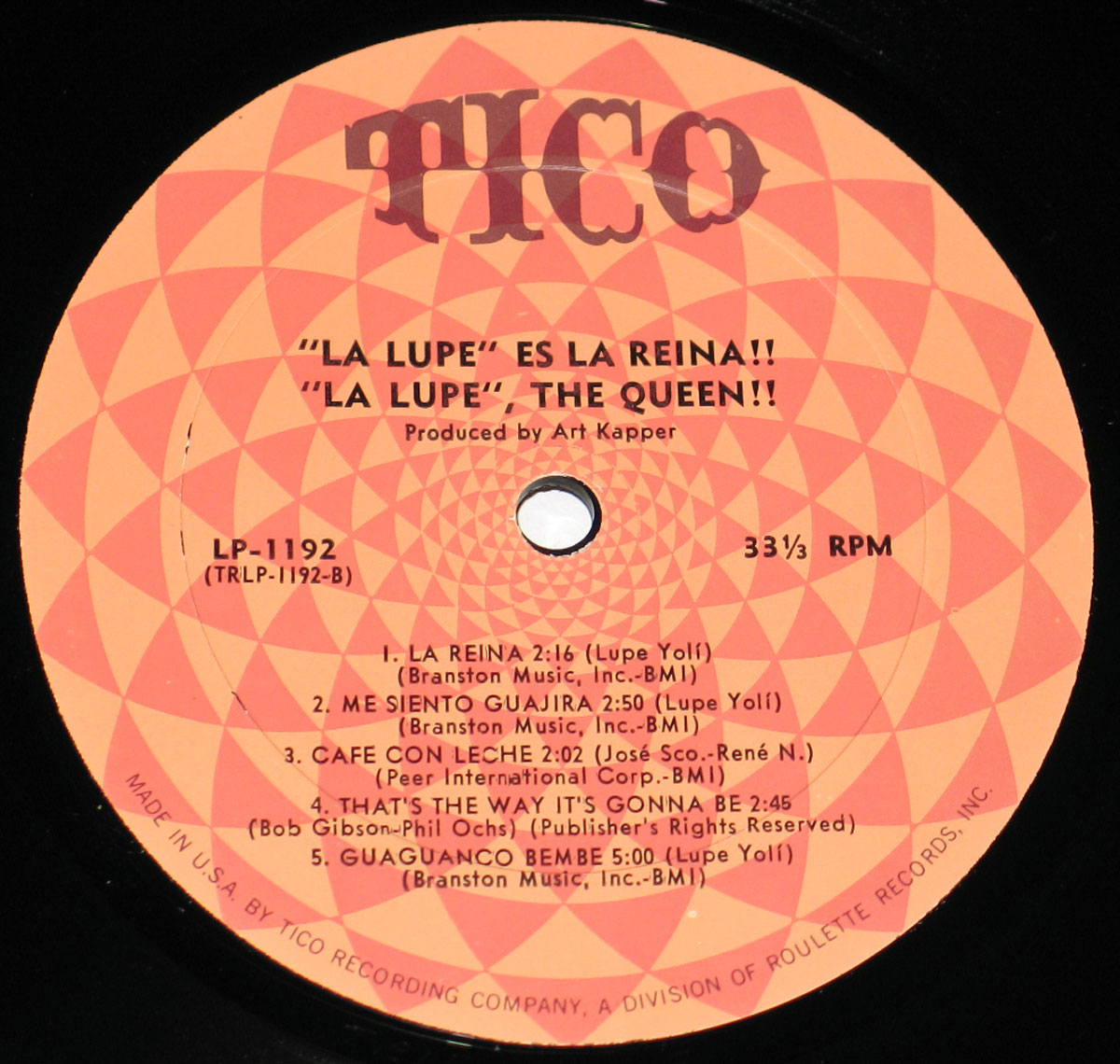La Lupe Es La Reina Album Description:
La Lupe Es La Reina (The Queen) – 1969 album on Tico Records, recorded at A & R Studios in New York, produced by Art Kapper, arranged and conducted by Joe Cain (Side A) and HŽctor Rivera (Side B).
An Electrifying Crown Moment
In 1969, La Lupe released La Lupe Es La Reina (The Queen), a powerful entry into her catalogue that crowned her once more as the undisputed ÒReina de la Mœsica Latina.Ó This LP came from a frenetic era in her journey Ñ when the Cuban-born diva had already carved out a fiery reputation in New YorkÕs Latin scene with her charismatic intensidad and fearless stage presence. It was puro fuego, puro teatro.
Historical & Musical Context
La Lupe arrived in New York in 1962 at a moment when boogaloo, Latin soul, mambo, bolero and Afro-Cuban rhythms collided. Tico Records was at the epicenter, with titans like Tito Puente, Machito and Tito Rodr’guez. Into this world stepped La Lupe, bringing a voice full of sentimiento and a dramatic flair that blurred the line between performance and ritual.
Musical Highlights & Spiritual Expression
The album explodes with ÒPuro Teatro,Ó written by Tite Curet Alonso, a number that defined her persona with biting irony and theatrical passion. Side by side with boleros and guajiras are tracks penned by La Lupe herself: ÒLa Reina,Ó ÒMe Siento Guajira,Ó and the deeply spiritual ÒGuaguanc— BembŽ.Ó The latter, with its Afro-Cuban prayer roots, is a window into her Santer’a faith Ñ mœsica as oraci—n. The album cover, with La Lupe in white garments and headscarf, is both visual testimony and cultural orgullo.
Craftsmanship & Collaborative Energy
Producer Art Kapper and engineer Fred Weinberg (su favorito) caught the magic inside A&R Studios. Side AÕs arrangements by Joe Cain balance bolero sweetness with urban sabor, while Side B under HŽctor Rivera pushes into earthy guaguanc— and bilingual grit with ÒThatÕs the Way ItÕs Gonna Be.Ó The combination gave the record its unique sabor a barrio y Broadway.
An Unforgettable Legacy
More than a tracklist, this LP is a manifesto of La LupeÕs artistry Ñ her dual devotion to the sacred and the secular. Her boleros ache with passion, her Afro-Cuban chants burst with ancestral fuerza, and her stage energy was uncontainable. Listeners in 1969 heard not only a singer, but a mujer who lived every palabra she sang.


